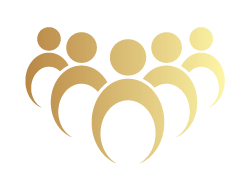Overcoming Unconscious Bias
You can find it in every work environment, but most of us don’t see it. It interferes with good management decision-making, affecting everything from hiring, promotions, layoffs, and teambuilding to advertising, marketing, product development, and product placement. It impacts our thought processes and can cloud our judgment.
“According to Timothy Wilson, professor of psychology at the University of Virginia and author of the book Strangers to Ourselves: Discovering the Adaptive Unconscious, we are faced with approximately 11 million pieces of information at any given moment. However, our brains are only able process about 40 of those bits of information at one time. So, the brain generates shortcuts and uses past knowledge to make assumptions. Most often, we don’t even recognize it’s happening.” This unconscious bias results in our making decisions based on what we expect, especially when it comes to “people” decisions like hiring the best person for the job.
“Most of us believe that we are ethical and unbiased. We imagine we’re good decision makers, able to objectively size up a job candidate or a venture deal and reach a fair and rational conclusion that’s in our, and our organization’s, best interests,” writes Harvard University researcher Mahzarin Banaji in Harvard Business Review. “But more than two decades of research confirms that, in reality, most of us fall woefully short of our inflated self-perception.” The result is our multiple unconscious biases serve as boundaries, restricting and confining decision-making capabilities.
Consider those from whom we seek advice and those we trust most. Who are they? For most of us, if we take inventory, we will uncover that our closest advisors and most trusted colleagues are the least diverse. They more often than not think like we do, are the same ethnicity, are of the same or similar culture, have similar upbringing, education, and work experience, are in the same age category, and hold similar beliefs.
Most of us have a bias toward sameness. If we most often make decisions influenced by our most trusted similarly thinking advisors, what is the likelihood that we capture the cultural, cognitive, or experiential diversity that research has proven benefits businesses in terms of innovation, productivity, and profitability? If we continue thinking and acting along similar lines and only seek perspectives and enact ideas, initiatives, and policies of those who hold the same perspectives we hold, we can’t be surprised when we aren’t making progress in hiring or promoting diversity, or developing new products, creating new processes, creating inclusive work environments, and reaching a broader client base. Of course, we value and continue to make decisions with the aid of our trusted colleagues. The challenge is to broaden our circle and build trust among those who have varying ideas, perspectives, and cultures.
Many times, as research has noted, bias is the main culprit behind decision-making. Whether biases are based on age, race, marital status, class, gender, religion, sexual orientation, culture, or other factors, our biases impact our worldview and how we understand, respond, and react to every experience. What can we do to defeat the unconscious bias that influences how we develop, market, and disseminate products and services, and who we hire, fire, promote, and value as high potential in our organizations? Here are seven strategies every person can apply right now.
Check your initial thoughts
Your first impressions may be clues to any biases you have. Ask yourself, “Would I feel the same way, if this person were part of a different group?” Pause long enough to give yourself time to process what you are doing and how biases might be affecting your decision.
Be logical
Utilize the power of logic. Process how many people you actually know that conform to your actual bias. You will likely find that the number of people that conform to your bias that you personally know is quite few. Avoid allowing urgency or professional pressures to cause you to override logic and default to bias.
Focus on skills and eliminate distractions
Ensure job candidates go through the same selection process when hiring for an open position. Define clear evaluation criteria and standards prior to reviewing resumes. Implement blind resume reviews, eliminating any identifying factors that could bias hiring managers. Avoid unstructured interviews by using assessments and predetermined interview questions.
Check the data
Review company hiring trends over a specified period time. Does the data reveal a tendency toward hiring white males and away from hiring underrepresented people groups? Is there evidence of a preference for candidates under 30 years of age? While management may stand in denial over any internal corporate bias, the data in company records may reveal another story. Look at the data.
Tackle the “M” word — microaggression
You may have seen or experienced a time when someone was new and tried to join in a conversation with a group and they responded by acting as if the person wasn’t in the room, by physically turning away from them or by talking to everyone around the person and never acknowledging their presence. Or perhaps you were the one, consciously or unconsciously, who ignored the new person. With body language, words, and distinctly pernicious behaviors, we send subtle and not-so-subtle signals that adversely impact our current and future interactions with individuals we encounter at work and throughout our circles of influence. These all-too-familiar behavioral and verbal indignities that convey insulting, unwelcoming, and sometimes intimidating comments about race, religion, sexual orientation, socio-economic status, and gender are called microaggressions. As team members become aware of whom they typically interact with, how they interact with one another, and how their behavior and language affects others in their workspace, the environment becomes more equitable for everyone and the effects of unconscious bias dissipate.
Be intentional
Act as if the bias doesn’t exist. Intentionally adjust behavior to counter any biases you tend to exhibit. Set a month long specific, measurable goal to try new language and behaviors and note the differences in your encounters with team members. Don’t hold so rigidly to what you think you know that you disregard evidence of anything that might change your mind and thereby change your actions.
Promote connectedness
Value difference and concentrate on commonalities. Lead to connect ideas and people — as one who builds bridges between cultures, gender, and generations — and try to find common ground. Reach out to people who are different and talk about music, food, movies, books, or sports. As you realize how little difference exists, bias begins to fade.
The bottom line is this: the desire to defeat unconscious bias is not enough. In order to see organizational improvement and increased productivity, strategies have to be implemented in the workplace leader to leader, team to team, and business unit to business unit. Desire is a powerful force for change; however, rational and open minds are the necessary tools. One without the other gets us nowhere. To defeat unconscious bias, we must have an awareness of unconscious biases, use our thoughts to weaken them, and behave in ways that run counter to what our unconscious biases tell us to.




Leave a Reply
Want to join the discussion?Feel free to contribute!